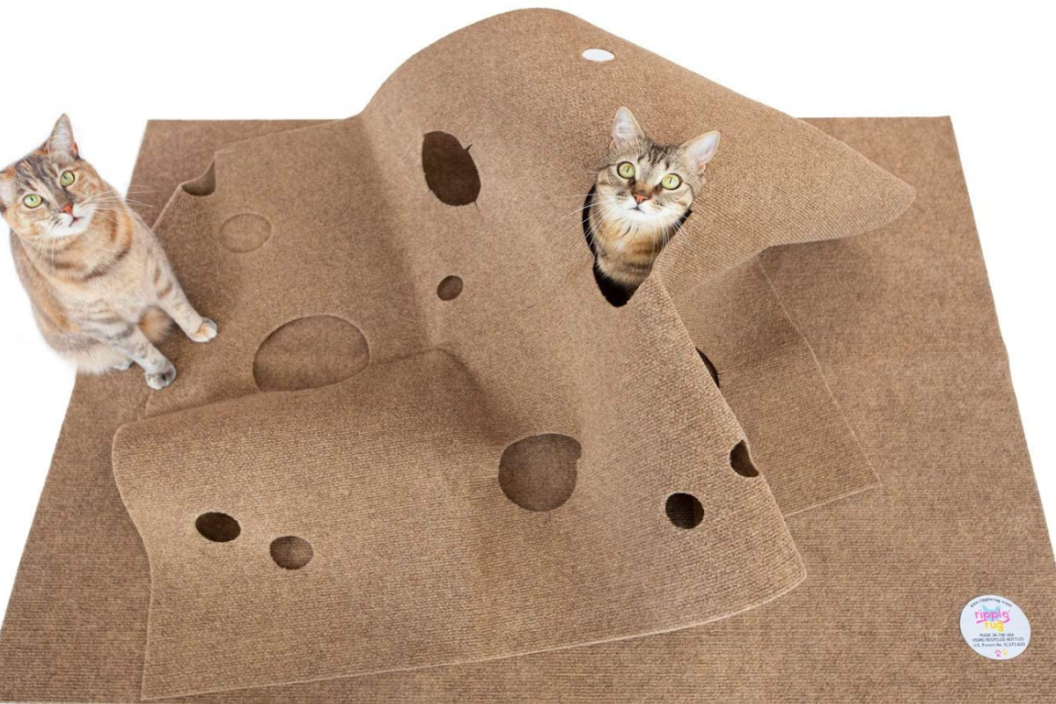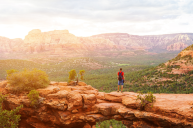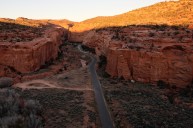Just about 15 miles from the Las Vegas Strip past the suburb of Summerlin, you'll find one of Nevada's most stunning scenic treasures: the Red Rock Canyon National Conservation Area. Formed hundreds of millions of years ago, the site is packed with unique geological features like petrified wood, dunes frozen in time, and the red rock formations it gets its name from.
Those interested in day trips will be happy to know the national conservation area is swarming with horseback riding and hiking trails, not to mention excellent opportunities for biking and rock climbing. Every trailhead in the area is easy to reach thanks to the scenic loop drive that circles its interior and the many parking areas the Bureau of Land Management has been kind enough to construct.
Whether you're looking forward to visiting the Strip or dreading another trip to the Hoover Dam, we strongly urge you to add Red Rock Canyon to your itinerary when you're in the Southern Nevada area.
Red Rock Canyon National Conservation Area
One of the most common things people want to know about Red Rock Canyon is what the weather is like. But, of course, since it's in the desert, you'd most likely expect the same sort of hot and dry conditions you'd find at nearby parks like the Mojave Desert and Joshua Tree, right?
While it can get sweltering and dry in the area, it can also get cold and wet when you aren't expecting it. The Spring Mountains conservation area is located in were settled by natives for thousands of years precisely because of its temperate mix of weather. So, in addition to bringing plenty of water and sunscreen, you should definitely consider getting some clothing to layer and a light rain jacket.
As ever, be sure to check the weather before you head out. Then recheck it on another app to be sure.
Camping Options
RELATED: North America's Lowest Point Sits at Death Valley National Park
The area has several camping opportunities for small and large groups and folks in RVs, reserved at recreation.gov. There's also some hotels nearby, like the appropriately named Red Rock Casino Resort & Spa. And don't forget, dispersed camping is allowed in some parts of the area since the BLM manages it.
Must-See Sites & Hikes in Red Rock Canyon
As mentioned above, each different stop on the area's 13-mile scenic drive has its own parking lot in addition to other occasional conveniences like picnic areas. Below are a few choice destinations we suggest since there's no way you can do the whole area in one day, let alone a week or a month. In addition, every site has a handful of hiking trails ranging from easy to complex.
- Red Rock Canyon Visitor Center: This is the first stop you'll reach on the area's 13-mile scenic drive. In addition to a bookstore and gift shop, the visitor center also has fully plumbed restrooms, vending machines, and other conveniences.
- Calico Hills: This is probably the most popular and iconic point in the park. Expect to see a lot of people, particularly hikers and rock climbers.
- Sandstone Quarry: If you want to snap selfies with the majestic Turtlehead Peak in the background, this is your go-to spot.
- Willow Springs: Well known for its ancient petroglyphs, this stop also links up with a dirt road for 4x4ers eager to see some bighorn sheep and wild donkeys in the backcountry.
- Pine Creek Canyon: We really shouldn't tell you about this spot since it is our favorite place to have a mellow walk through the area. This is where you should go if you want it a little quieter. It's one of the last stops on the loop.
What's your favorite hiking trail in Red Rock Canyon? Keep others from missing out on our Wide Open Roads Facebook!




